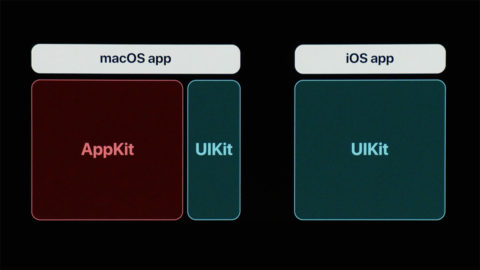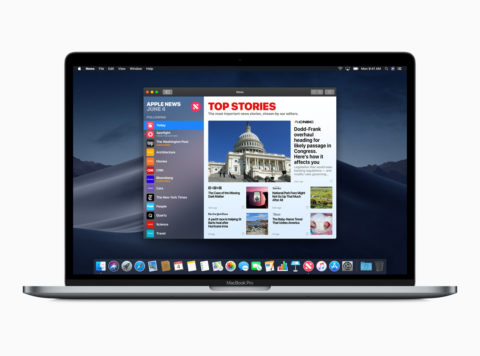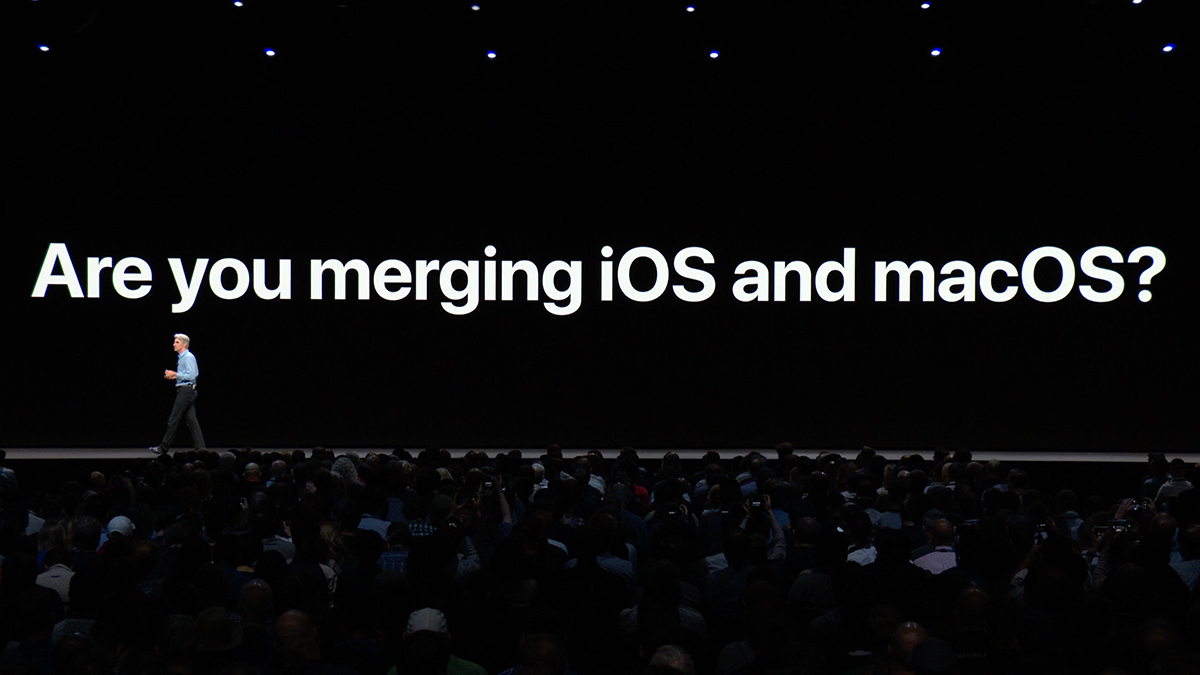Are iOS and macOS really combining? And what does this mean for the future of your Apple devices?
Prior to WWDC 2018, the rumor mill went into overdrive. A new technology called Marzipan was on the way. It would, we were told, herald a brave new future for Apple, where any app you downloaded could work on any device. This would largely be down to Apple taking iOS and macOS and mashing them into a sticky pulp with a really big fork.
In the event, Apple’s take on the future of its operating systems was rather more nuanced. Instead of frenzied mashing, it delicately carved a piece from iOS that deals with interfaces and stitched it to macOS. The net result is it should be significantly simpler for app creators to bring iPad apps to the Mac.

So ends the dream of Apple device convergence, snuffed out in an instant. At least, that’s the take from those who were hoping for touchscreen Macs or more Mac-like iPads and iPhones. But the reality is Apple’s been bringing its operating systems together in subtler ways for years – and such efforts are ongoing.
Get connected
Assuming you’re signed into iCloud, there’s already plenty of seamlessness. Data whirls in the cloud, meaning when you add a reminder on your Mac, it’ll show up on your iPhone. Apple’s Continuity feature takes things further. Start tapping out an email on your iPhone and get fed up prodding tiny keys and you can hurl the in-progress missive at an iPad or a Mac.
With iOS 12 and macOS Mojave, Apple’s taking another step along this road. You’ll be able to use your iPhone as a scanner for Mac apps (and as a camera as well). And, yes, once Apple unleashes the tools it used to bring the likes of its own News and Stocks from iPad to the Mac, expect a flood of other iOS apps to follow.
Come together
In the short term, this means the iPad and Mac are converging, but only in terms of some software. The iPhone remains more distinct in software terms, yet is being more heavily integrated in the sense of being a peripheral for other devices.

It seems cautious, but that’s the point. Marzipan isn’t about flinging iPad apps at the Mac with merry abandon, but making things simpler for app creators. Just because an iOS framework will be on the Mac, iOS as a whole won’t be. And although some iOS apps may begin life on an iPad, they will feel like native Mac apps on the Mac itself.
Perhaps there’s an endgame where everything – iPhone; iPad; Mac – unifies. Maybe 2028’s iPhone XX will be the only device Apple makes, powerful enough for any task that currently requires a Mac, and with the smarts to work with external displays to negate the need for other Apple hardware. For now, though, Apple’s keen to call a spade a spade – or at least an iPhone an iPhone, an iPad an iPad, and a Mac a Mac.

